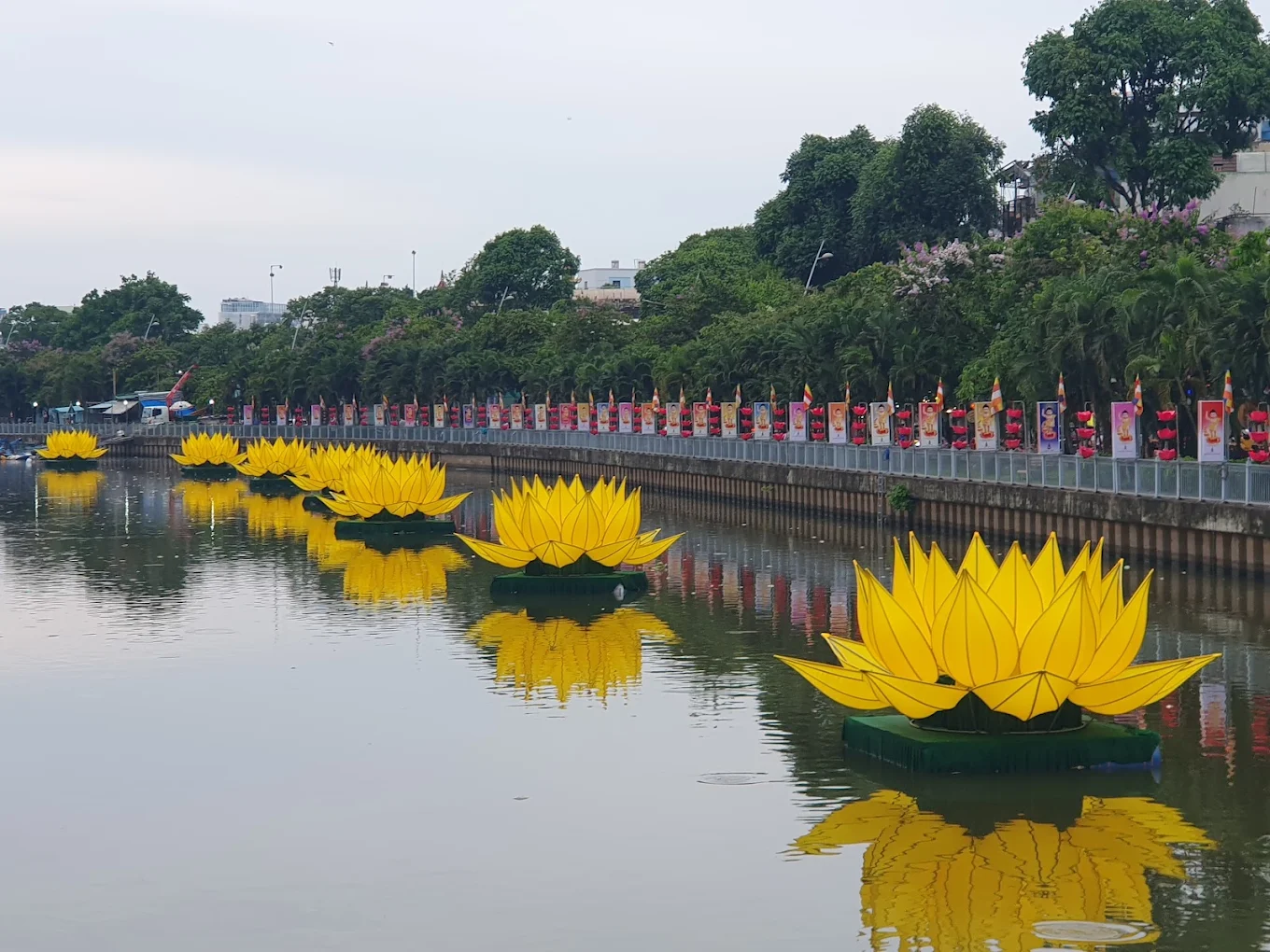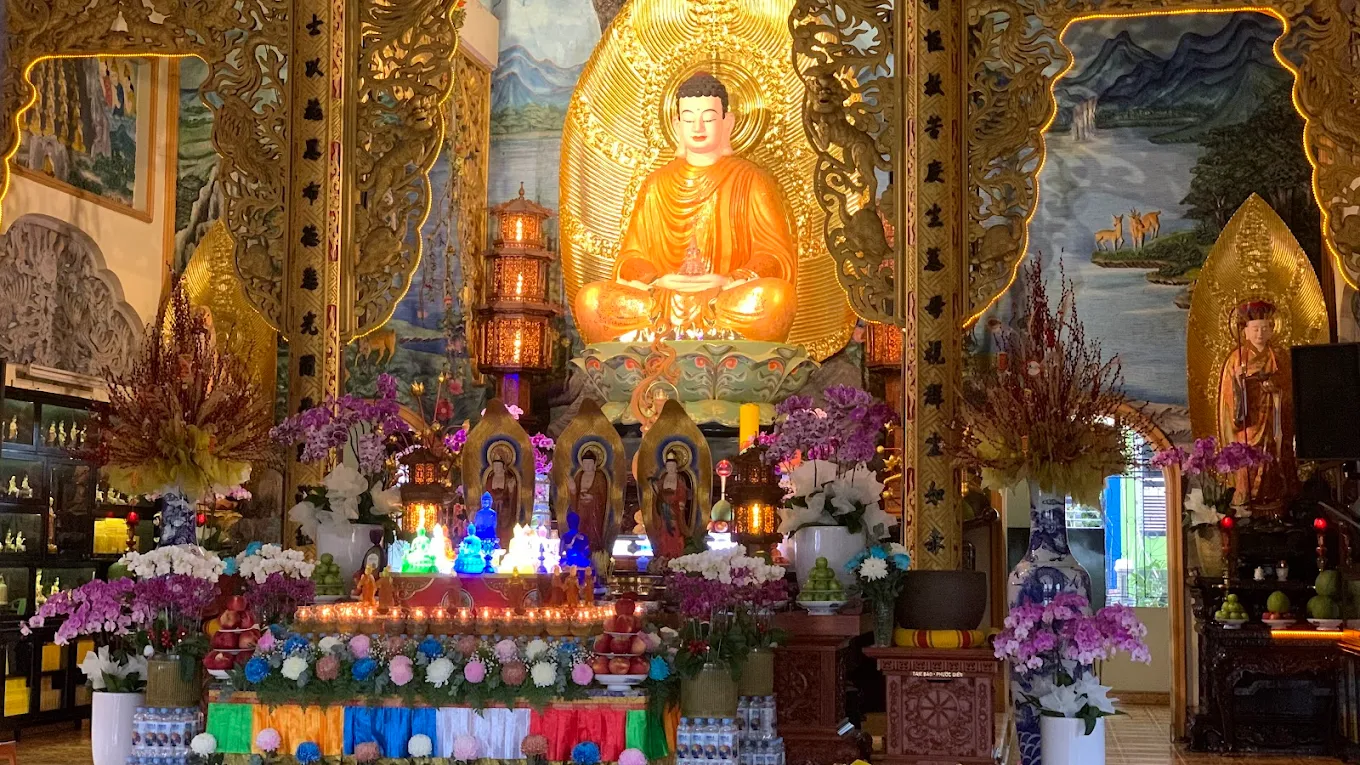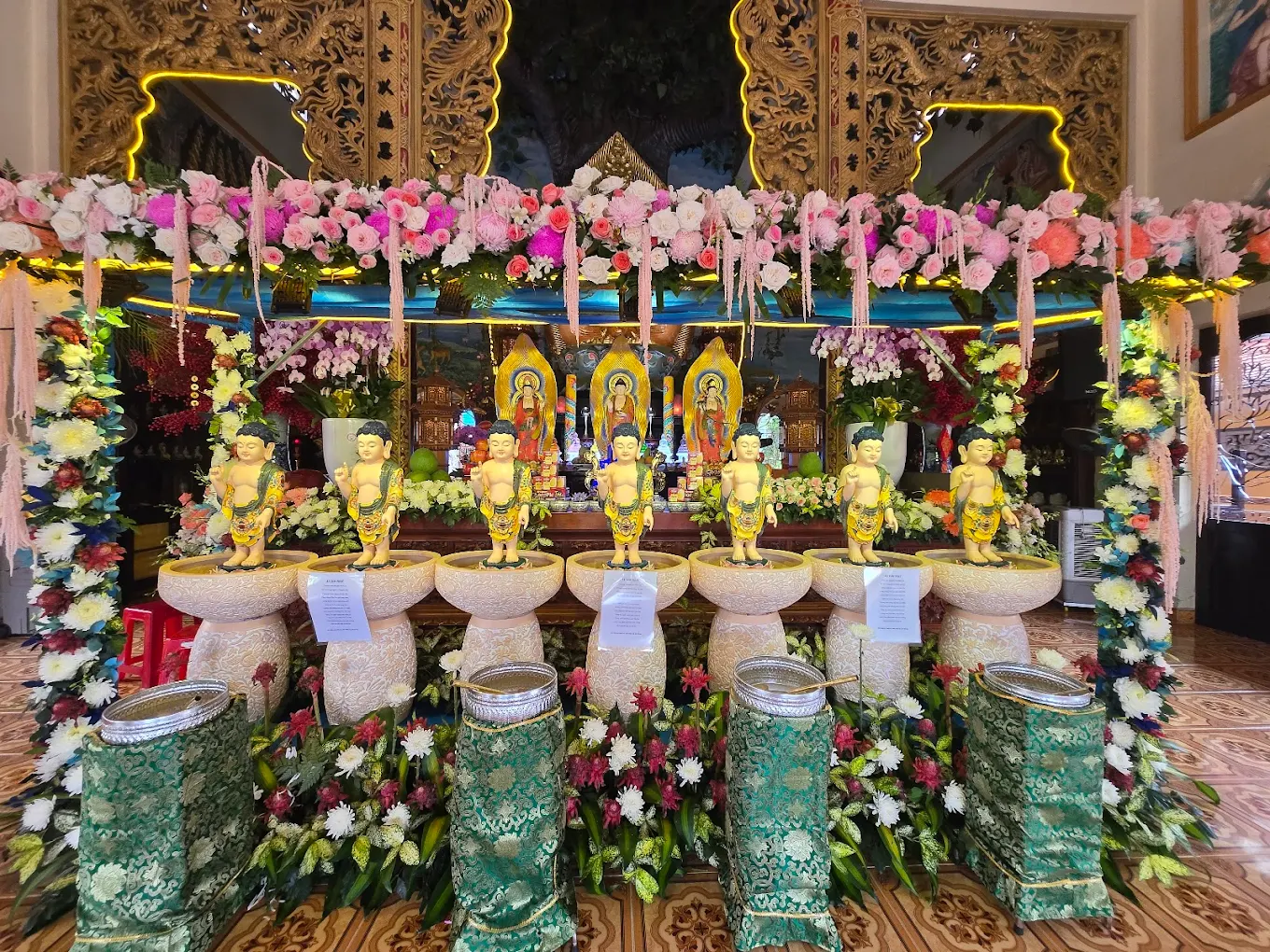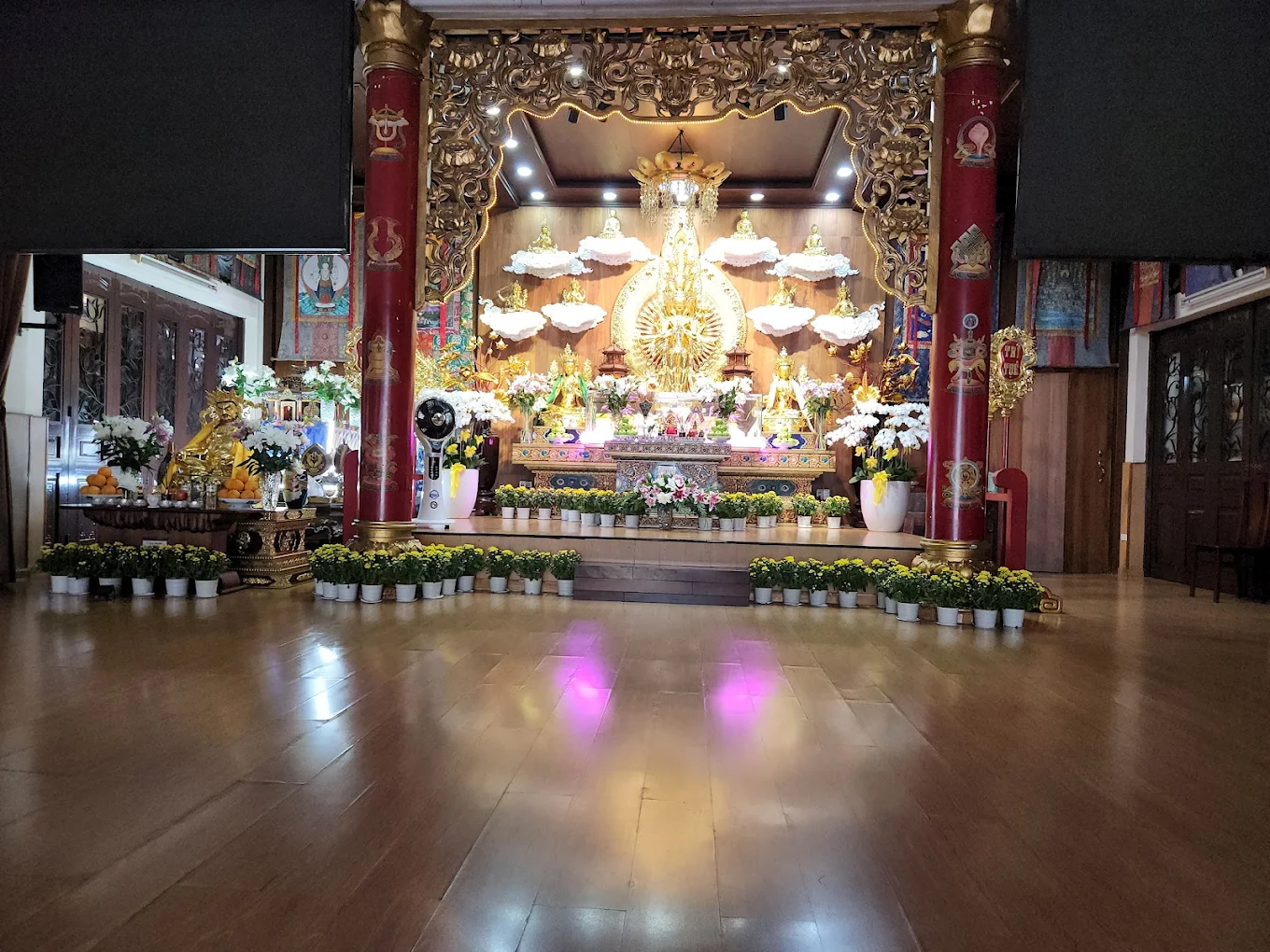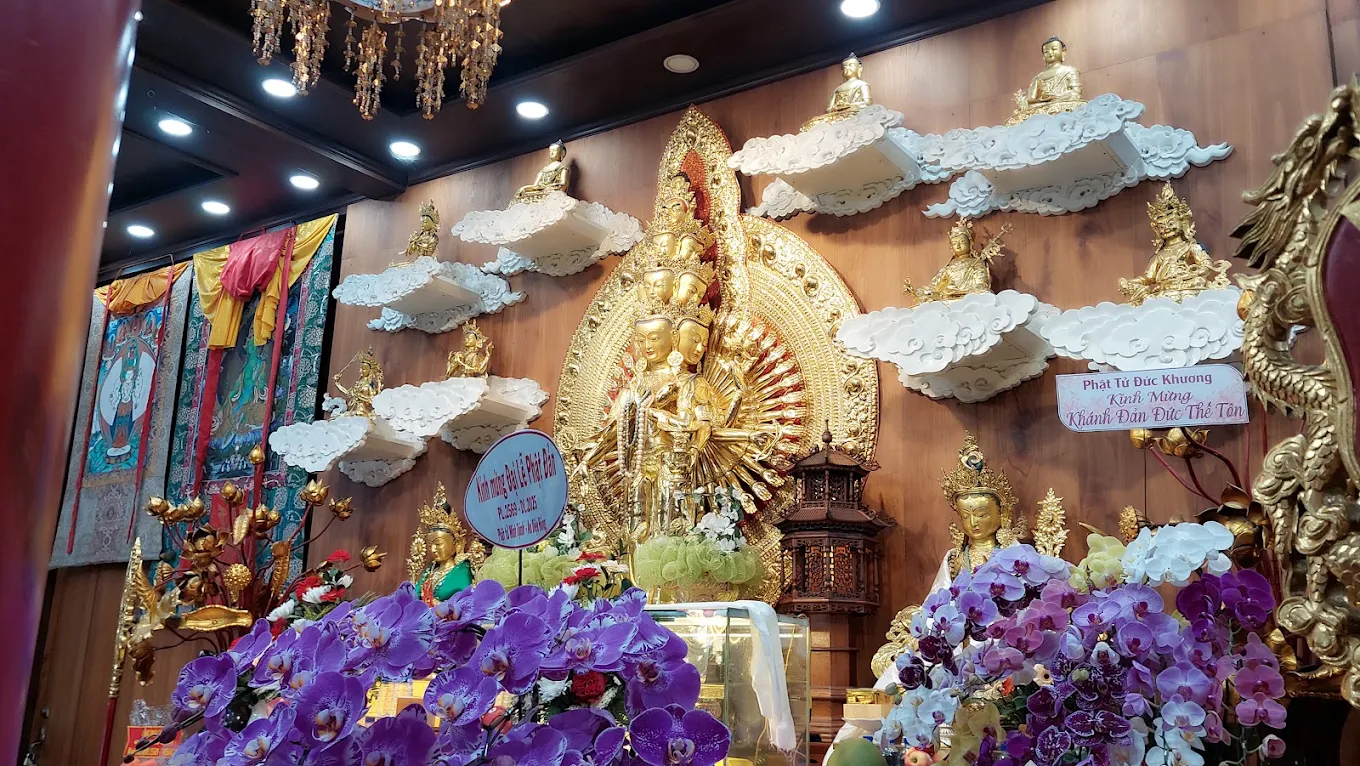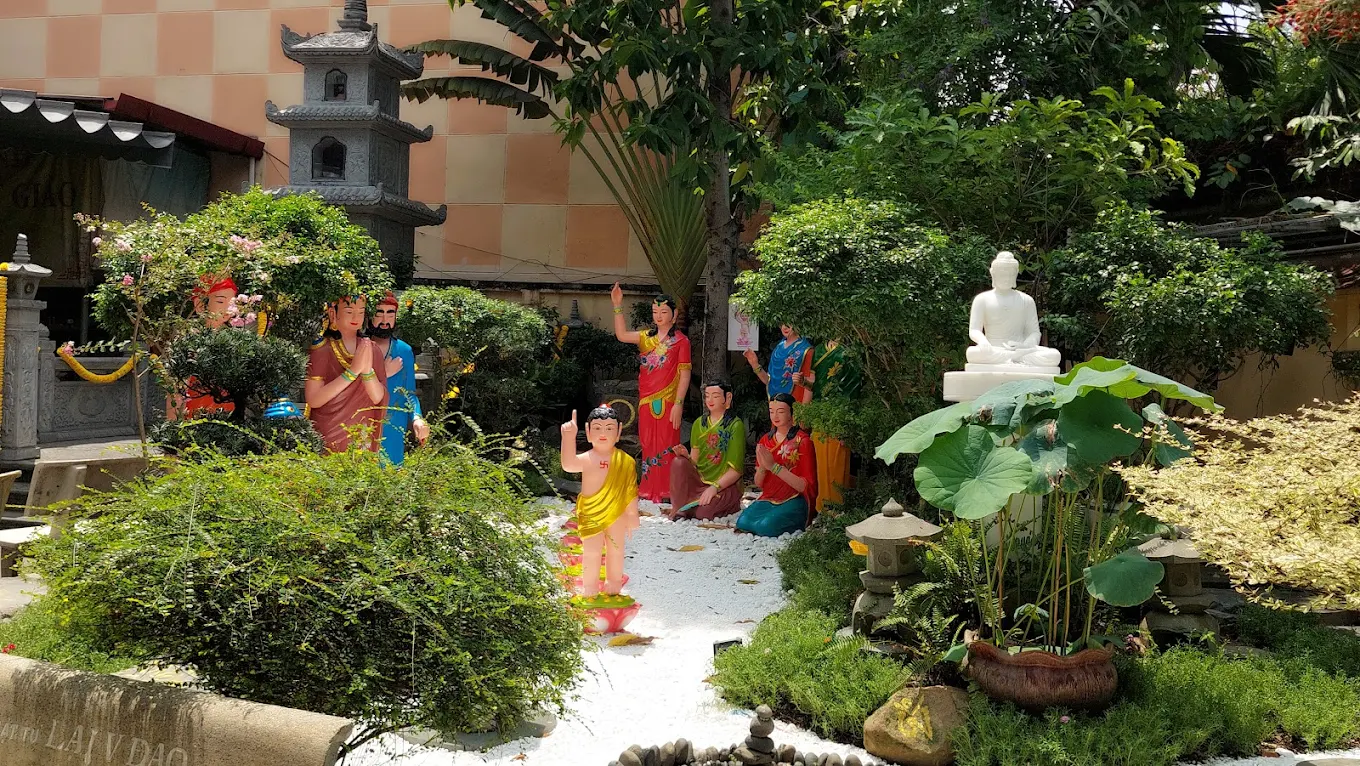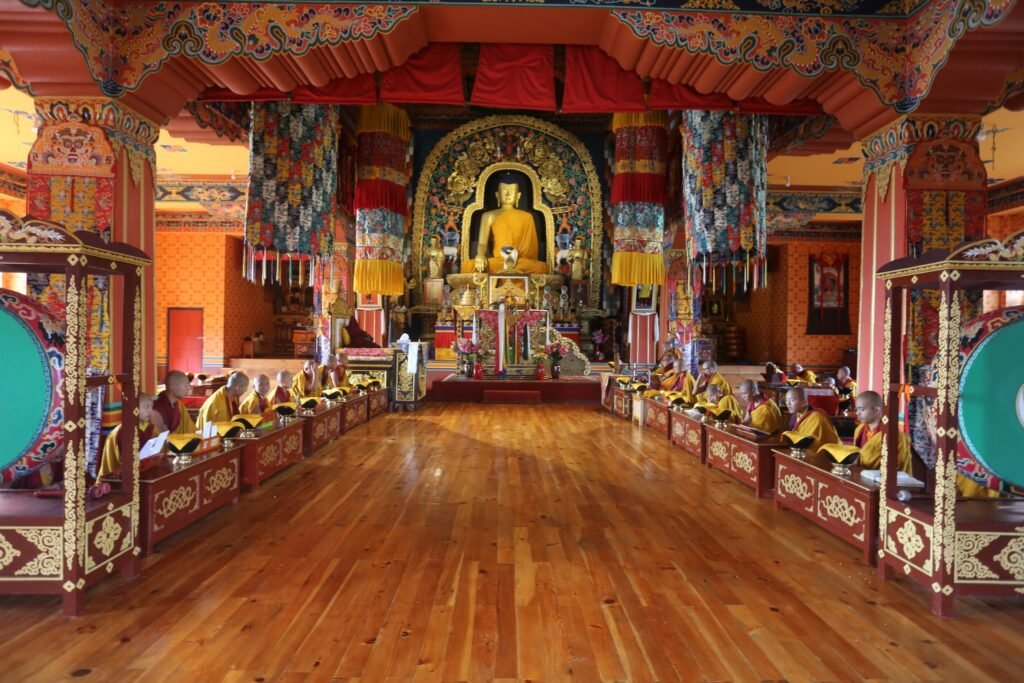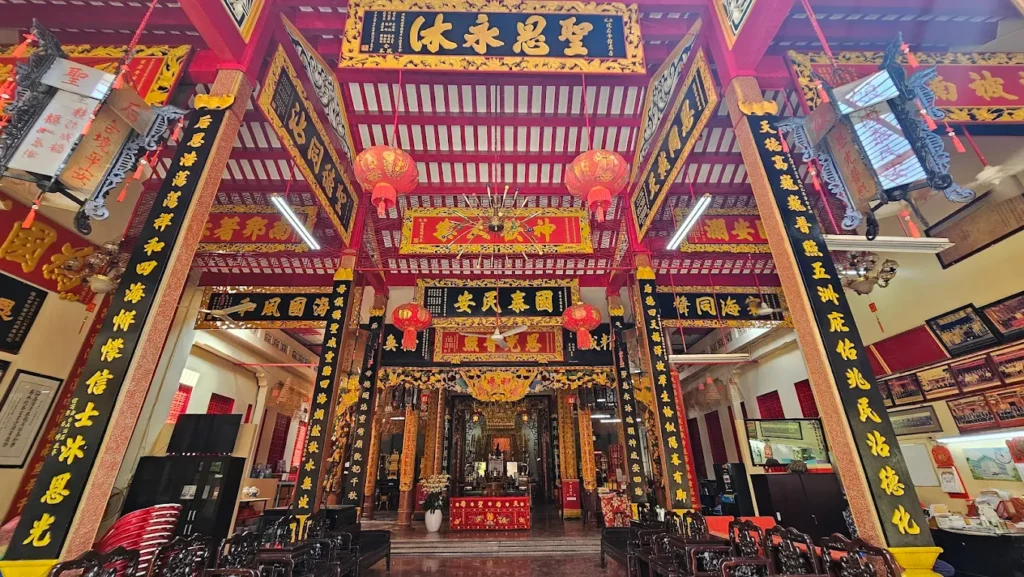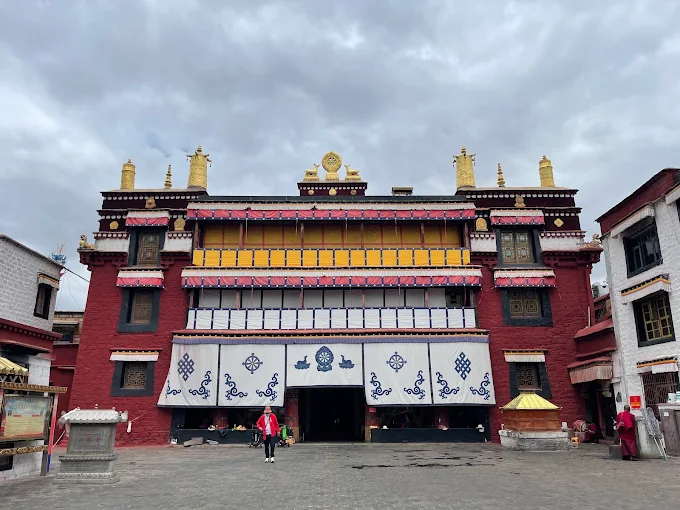Quan Am Tu Vien Pagoda: Saigon’s Haven of Compassionate Devotion
Along Trường Sa Street in Phú Nhuận District, Quan Am Tu Vien Pagoda, founded in 1960 by Hòa thượng Thích Tâm Châu, glows with serene majesty, its red-tiled roofs catching Saigon’s dawn. This Mahayana pagoda [chùa], rooted in the Vajrayana Drukpa lineage, resonates with the Sanskrit chants of the Great Compassion Retreat [Đạo tràng Đại Bi]. Its main hall, adorned with statues of Shakyamuni Buddha and Avalokiteshvara [Quán Thế Âm], anchors a vibrant community, while the Tuệ Tĩnh Clinic offers free healing. Led by Ni sư Thích Nữ Huệ Đức, the Quan Am Tu Vien Pagoda listing draws devotees and travelers to Ho Chi Minh City’s Buddhist soul.
Citadel of Great Compassion: Overview and Significance
Quan Am Tu Vien Pagoda, a Mahayana sanctuary in Phú Nhuận, blends spiritual devotion with charitable outreach, enriching the Quan Am Tu Vien Pagoda listing. Its historical legacy, cultural vibrancy, and community service make it a cornerstone of Ho Chi Minh City’s Buddhist heritage.
Historical Roots and Legacy
Founded in 1960 by Hòa thượng Thích Tâm Châu, the pagoda spread Mahayana and Vajrayana Drukpa teachings in Saigon. Renovated in 2000 and 2005, it thrives under Ni sư Thích Nữ Huệ Đức, who succeeded Ni trưởng Thích Nữ Như Giác in 2022. The Quan Am Tu Vien Pagoda listing highlights its Tuệ Tĩnh Clinic, serving the poor since 2017.
- Key Milestones:
- 1960: Founded by Thích Tâm Châu in Phú Nhuận.
- 2000, 2005: Renovations enhanced architecture.
- 2017: Tuệ Tĩnh Clinic opened, aiding the community.
Cultural and Spiritual Significance
Rooted in Mahayana’s Vajrayana Drukpa lineage, the pagoda hosts the Great Compassion Retreat, chanting the Great Compassion Mantra [Chú Đại Bi] in Sanskrit, a rare practice fostering universal compassion. Its Nyungne fasting ritual cultivates discipline, while the Quan Am Tu Vien Pagoda listing draws pilgrims, complementing Jade Emperor Pagoda in Ho Chi Minh City’s spiritual tourism.
- Cultural Roles:
- Preserves Drukpa practices through Sanskrit chants.
- Enhances Saigon’s spiritual tourism with charity.
- Unites Phú Nhuận through rituals and outreach.
Community and Global Connections
The pagoda serves Phú Nhuận with retreats and the Tuệ Tĩnh Clinic, healing the community. Its 2024 Vesak and Vu Lan festivals drew thousands, fostering unity. The Quan Am Tu Vien Pagoda listing attracts pilgrims from Asia, supported by Vietnam’s tourism, connecting local devotion with global curiosity.
- Community Impact:
- Provides free healing at Tuệ Tĩnh Clinic.
- Hosts festivals, uniting Buddhists.
- Draws global visitors, promoting Mahayana heritage.
As lotus ponds shimmer and chants echo, the pagoda’s compassionate legacy invites exploration of its architectural serenity, a highlight of the Quan Am Tu Vien Pagoda listing.
Sanctuary of Serenity: Architectural and Spiritual Features
Quan Am Tu Vien Pagoda’s vibrant design, renovated in 2005, blends Vietnamese and Chinese aesthetics. Its riverside setting and sacred statues enhance its appeal, making it a cornerstone of the Quan Am Tu Vien Pagoda architecture.
Iconic Design and Structures
The pagoda’s red-tiled roofs, upturned eaves, and golden pillars reflect Vietnamese-Chinese influences. The main hall [chánh điện], restored in 2005, anchors a lush courtyard with lotus ponds and prayer wheels. A modern wing houses the Tuệ Tĩnh Clinic, blending devotion with service in the Quan Am Tu Vien Pagoda architecture.
- Design Highlights:
- Red-tiled roofs and golden pillars, Vietnamese-Chinese style.
- Lush courtyard with lotus ponds and prayer wheels.
- Tuệ Tĩnh Clinic, a charitable wing.
Sacred Statues and Relics
The main hall houses statues of Shakyamuni Buddha [Phật Thích Ca], Avalokiteshvara, Địa Tạng Bồ Tát [Ksitigarbha], and Tổ Bồ Đề Đạt Ma [Bodhidharma], crafted in bronze and adorned with silks. These statues, central to Mahayana devotion, inspire reverence. Prayer wheels and thangkas [tranh cuộn] amplify the spiritual potency of the Quan Am Tu Vien Pagoda listing.
- Statue Details:
- Shakyamuni Buddha: Bronze, ~2 meters, serene.
- Avalokiteshvara: Bronze, symbolizing compassion.
- Địa Tạng Bồ Tát: Bronze, embodying salvation.
Artistry and Environmental Harmony
Vietnamese artisans crafted frescoes and carvings, using natural pigments for lotus and dragon motifs, rooted in Zennist aesthetics. The clinic’s modern design reflects practical compassion. The pagoda’s riverside setting, with minimal environmental impact, aligns with Vietnam’s Buddhist ethos, enhancing the Quan Am Tu Vien Pagoda architecture.
- Artistic Features:
- Lotus and dragon frescoes, painted naturally.
- Carved wooden beams with Buddhist symbols.
- Eco-friendly riverside design.
The pagoda’s serene artistry and compassionate mission invite exploration of its rituals, a vital part of the Quan Am Tu Vien Pagoda listing.
Rhythms of Devotion: Rituals and Practices
Quan Am Tu Vien Pagoda pulses with Mahayana rituals, blending Sanskrit chanting, fasting, and healing. Its unique practices and festivals draw devotees, enriching the Quan Am Tu Vien Pagoda listing.
Daily and Unique Rituals
Nuns lead the Great Compassion Retreat, chanting the Great Compassion Mantra in Sanskrit, a rare practice fostering compassion. The Nyungne [snyung gnas] ritual, a three-day fasting retreat, cultivates discipline. The Tuệ Tĩnh Clinic offers free traditional healing, a hallmark of the Quan Am Tu Vien Pagoda listing’s compassionate outreach.
- Daily Practices:
- Great Compassion Mantra chanting, ~1 hour.
- Nyungne fasting, three days annually.
- Free healing at Tuệ Tĩnh Clinic.
Festival Traditions
The pagoda hosts Vesak [Phật Đản] in April/May and Vu Lan [Ullambana] in August, celebrating the Buddha’s life and filial piety with lamp lightings and prayers. These festivals, drawing thousands, unite Phú Nhuận’s Buddhists, distinct from daily rituals, enhancing the Quan Am Tu Vien Pagoda listing.
- Festival Highlights:
- Vesak: Lamp lightings and prayers, April/May.
- Vu Lan: Filial piety rituals, August.
- Communal gatherings, fostering unity.
Community and Visitor Engagement
Led by Ni sư Thích Nữ Huệ Đức, the pagoda engages Phú Nhuận with retreats and charity. Visitors join chanting or healing sessions, guided by nuns, enriching the Quan Am Tu Vien Pagoda listing. The clinic’s outreach strengthens community ties, connecting local devotion with global pilgrims.
- Engagement Activities:
- Guided chanting sessions, ~20 minutes.
- Free healing sessions, open to visitors.
- Community retreats and charity events.
The pagoda’s vibrant rituals and healing mission guide visitors to practical insights, ensuring a seamless journey to its sacred grounds.
Journey to Quan Am: Visitor Information
Quan Am Tu Vien Pagoda, a serene retreat in Phú Nhuận, offers easy access for those exploring the Quan Am Tu Vien Pagoda listing. Its riverside logistics and nearby attractions make it a must-visit in Ho Chi Minh City.
Navigating the Pagoda
Located at 384 Trường Sa, the pagoda is a short drive from District 1 via Nguyễn Đình Chiểu Street. A scenic boat ride across the Saigon River offers an alternative approach. The courtyard, with lotus ponds, is a brief walk from the entrance, with limited parking for the Quan Am Tu Vien Pagoda listing.
- Navigation Tips:
- Drive via Nguyễn Đình Chiểu to Trường Sa.
- Opt for a boat ride for scenic views.
- Expect a short walk from parking or dock.
Practical Details and Etiquette
Open daily from 7 AM to 6 PM, the pagoda welcomes visitors without an entry fee, though donations support the clinic. Dress modestly (shoulders and knees covered), remove shoes in the main hall, and avoid photography inside. Silence phones to respect meditation spaces. The address is 384 Trường Sa, Phường 2, Quận Phú Nhuận, Ho Chi Minh City, vital for the Quan Am Tu Vien Pagoda listing.
- Logistics:
- Address: 384 Trường Sa, Phường 2, Quận Phú Nhuận, Ho Chi Minh City.
- Hours: 7 AM–6 PM, daily.
- Transport: Taxi or boat ride.
- Etiquette: No indoor photography, dress modestly.
Immersive Experiences and Surroundings
Visitors can light incense for blessings or join Great Compassion chanting, guided by nuns, for the Quan Am Tu Vien Pagoda listing experience. Free healing sessions at Tuệ Tĩnh Clinic are available, best booked early. Nearby, Jade Emperor Pagoda and Tan Dinh Market offer cultural depth, while the Saigon River invites strolls.
- Immersive Tips:
- Join chanting for spiritual immersion.
- Try healing sessions at Tuệ Tĩnh Clinic.
- Visit Jade Emperor Pagoda and Tan Dinh Market.
The pagoda’s serene setting and compassionate rituals invite exploration of its philosophical depth, a highlight of the Quan Am Tu Vien Pagoda listing.
Wisdom of Quan Am: Cultural and Spiritual Insights
Quan Am Tu Vien Pagoda offers profound Mahayana insights, its statues and clinic symbolizing compassion and wisdom. Its role in Phú Nhuận’s community enriches the Quan Am Tu Vien Pagoda listing.
Philosophical Foundations
Mahayana’s Vajrayana Drukpa lineage, guiding the pagoda, emphasizes the Bodhisattva ideal—compassionate service for all beings’ enlightenment. The Great Compassion Mantra, chanted in Sanskrit, fosters universal compassion, while Nyungne cultivates discipline. These practices, shared via nun-led talks, deepen the Quan Am Tu Vien Pagoda listing’s spiritual value.
- Key Concepts:
- Bodhisattva Ideal: Compassion for all beings.
- Great Compassion: Chanting for universal healing.
Cultural and Symbolic Depth
Statues of Avalokiteshvara and Địa Tạng Bồ Tát symbolize compassion and salvation, inspiring devotees. Lotus motifs and prayer wheels reflect Vietnamese Buddhist aesthetics, shared during tours. The Tuệ Tĩnh Clinic embodies compassion in action, linking the Quan Am Tu Vien Pagoda listing to Saigon’s Buddhist soul.
- Symbolic Elements:
- Avalokiteshvara: Compassion and mercy.
- Tuệ Tĩnh Clinic: Healing as service.
Community and Environmental Resilience
The pagoda unites Phú Nhuận through retreats and charity, serving the community. Its riverside design, using local materials, aligns with Vietnam’s eco-conscious ethos. Community outreach ensures Buddhist values thrive, enriching the Quan Am Tu Vien Pagoda listing.
- Resilience Efforts:
- Free clinic, serving the poor.
- Sustainable riverside design.
The pagoda’s compassion and wisdom invite visitors to experience its sacred power, a cornerstone of the Quan Am Tu Vien Pagoda listing.
Why You Have to Get to Quan Am Tu Vien Pagoda
Quan Am Tu Vien Pagoda is a must-visit for its serene sanctity and Mahayana compassion in Ho Chi Minh City. Founded in 1960 in Phú Nhuận, its statues of Shakyamuni Buddha and Avalokiteshvara radiate wisdom, while the Tuệ Tĩnh Clinic heals the community. The Great Compassion Retreat’s Sanskrit chants and Nyungne rituals draw devotees to Saigon’s Buddhist soul. The Quan Am Tu Vien Pagoda listing beckons seekers, researchers, and pilgrims to a sanctuary where faith and healing unite, as lotus ponds shimmer and chants echo in timeless harmony.
